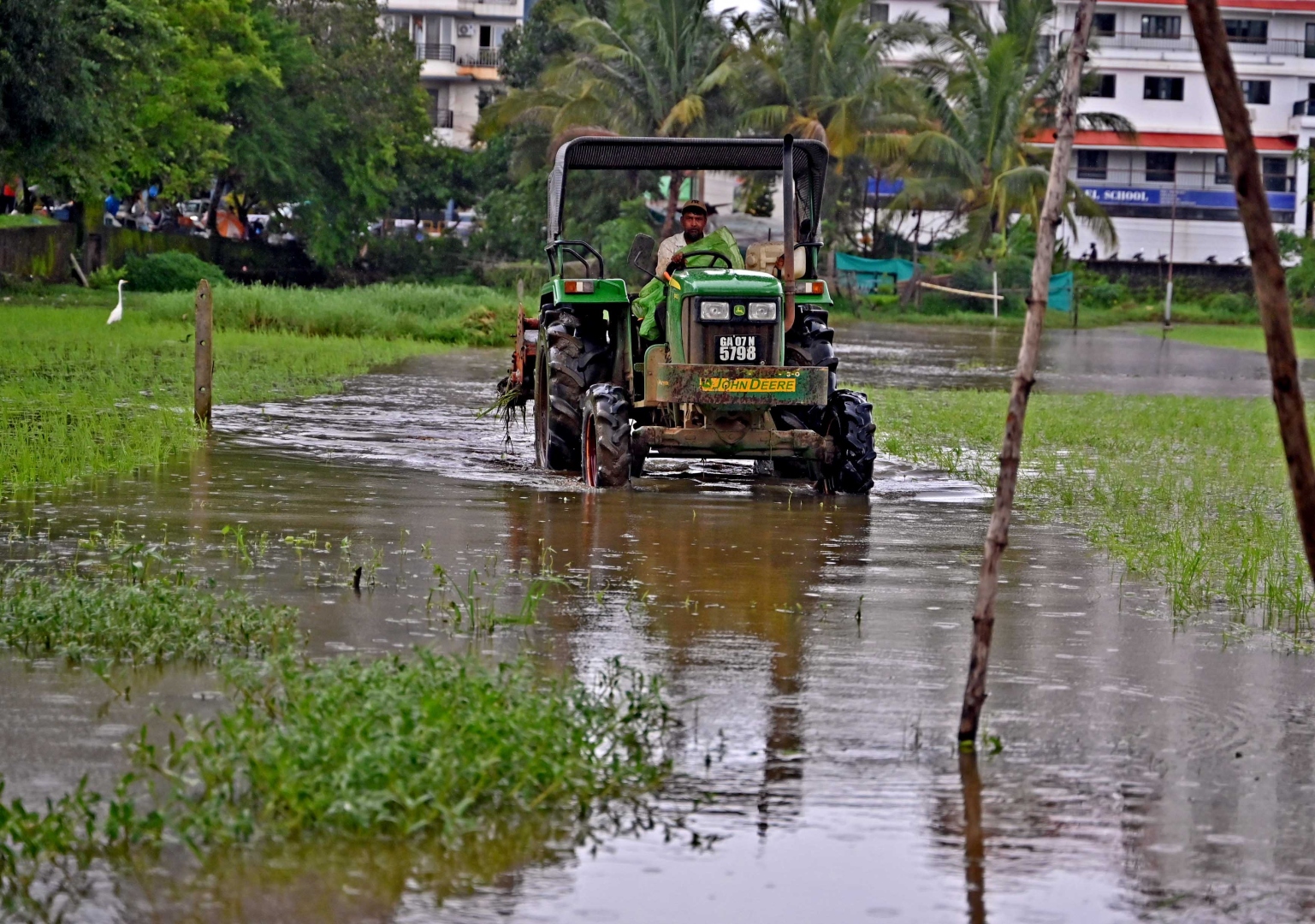Heavy showers in July lift farming hopes

A farmer drives a tractor through waterlogged fields in Taleigao as preparations for the kharif season get underway.
Photo Credits: Narayan Pissurlenkar
MAPUSA
After a sluggish start in June, the monsoon season in Goa has bounced back strongly in the first week of July, wiping out the early rainfall deficit and boosting the morale of the farming community.
The monsoon, which arrived 12 days ahead of schedule, remained subdued through most of June, ending the month with a 12 per cent shortfall in seasonal rainfall.
However, consistent and heavy downpours in the first week of July have more than made up for the lag.
As of July 6, the State has recorded a cumulative rainfall of 1,170 mm, which is 4 per cent above the long-term average for the period (June 1–July 6), according to data from the India Meteorological Department (IMD).
The renewed monsoon vigour comes as a relief to farmers across the State, particularly paddy growers who had delayed sowing due to the weak rainfall in June. “The monsoon has been normal to active during the first week of July. July 2 was the wettest day so far this month,” said Dr MR Ramesh Kumar, meteorologist and former chief scientist at the National Institute of Oceanography, Dona Paula.
He emphasised the importance of July and August in determining the overall success of the monsoon season.
“These are the peak monsoon months and crucial for determining the seasonal total. The rainfall patterns during this period – whether active, weak or in break phase – can significantly affect the overall outcome,” he explained.
Dr Kumar added that the low-level jet stream, situated about 1,500 metres above mean sea level, was flowing at 25 to 30 knots, enhancing moisture transport from surrounding seas into peninsular India, including Goa – a favourable sign for sustained rainfall activity.
Out of the 14 rainfall monitoring stations in Goa, only four have recorded less than 1,000 mm of rain so far.
Mormugao registered the lowest cumulative rainfall at 740 mm, while Dharbandora received the highest with 1,786 mm as of Sunday morning.
Looking ahead, the IMD has issued a yellow alert for Goa, predicting moderate to heavy showers to continue through July 12.
With July off to a strong start and the monsoon regaining momentum, optimism is on the rise, especially among the agrarian community.
The next few days will offer a clearer picture of whether the monsoon will continue to stay on course or experience intermittent breaks.